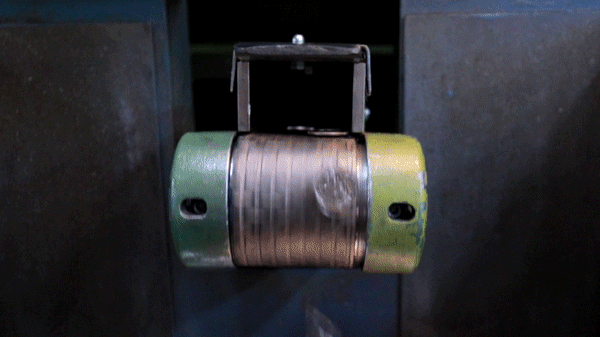
The U.S. Mint is celebrating a few important birthdays this winter. Of local importance is the 111th anniversary of the Denver branch's foundation a few weeks ago on Feb. 1. Nationally speaking, the mint will be celebrate its 225th birthday on April 2, and they're celebrating by striking the image of a black woman (for the first time) as Lady Liberty on a new $100 coin (there's more info on this at the bottom of this post).
With all this in mind we decided to take a quick trip for a fresh look at what goes on over there on West Colfax.

Like many of Denver's historic sites, the Mint here was founded in reaction to the gold rush that brought many people to the Mile High. It began in 1863 as a facility where lucky prospectors could bring gold ore to be melted into more manageable shapes. In 1906 it was officially re-opened as an official U.S. Mint.
Today the Denver Mint produces about 40 million coins a day. This is an exercise in supply and demand that aims to replace some $100,000 worth of coinage that's stashed away in piggy banks and under mattresses every single day.
To see how they do it, one must first suit up in protective gear -- this is a factory after all.

First, the Mint punches blanks from metal sheets (except pennies, which are shipped pre-punched). These sheets measure about 1500 feet long.

The punched coins represent about a third of the roll, the rest of which is shipped back to the supplier to be recycled.

Next the punched coins are heated and washed in preparation for stamping.

The readied blanks then fly through a machine that presses heads and tails into the softened metal, then spits them out into hoppers (except pennies, which make their way directly to storage).

When the hoppers are filled, workers wheel wagons full of the newly-minted coins to holes in the factory floor that funnel them downstairs to be counted.

On the bottom end of the floor hole are funnels that count the coins and load them into bags. These bags are then stacked on shelves, ready to be shipped to banks around the country.

Click and drag to see around the bag room. Within these modest kevlar containers is millions of dollars in metal money.
Each bag of quarters, half-dollars and dimes contains $50,000. The nickel bags contain $12,000. The penny bags, $4,000.

And of course, you can tell if your loose change was born in Denver if adorned by a distinctive "D." Otherwise, your lucky penny (or dime) was struck in Philadelphia.

Where are the bills you ask? You are certainly not the first to pose this frequently-asked question. Paper money is not made at the Mint. It's actually the U.S. Bureau of Engraving and Printing.
As for the commemorative $100 coin: this historic depiction of Liberty is being produced at the West Point Mint in New York. But don't fret, it's still super cool, and you can see its design process below:












